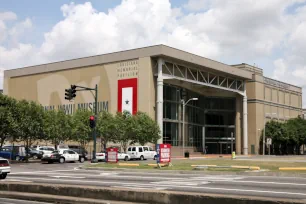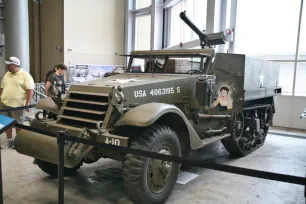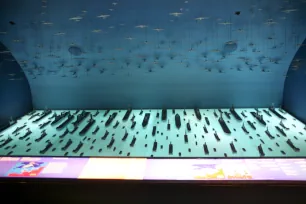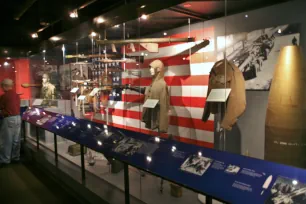The National World War II Museum in New Orleans is one of the city’s most popular attractions. It narrates the history of World War II from the outbreak of the war in 1939 until the surrender of Germany and Japan in 1945.





The museum opened its doors in 2000 as the National D-Day Museum, and the museum still has a large exhibit on D-Day and the Higgins Landing crafts in particular.
Higgins Boats
In fact, the reason why the National World War II Museum is located in New Orleans and not in Washington DC like so many other national museums, is the major role that the Higgins boats played during the Second World War. The Higgins boats – officially known as LCVP or Landing Craft Vehicle, Personnel -, were amphibious boats that made the landing on the shores of Normandy possible.
In total some 20,000 of these boats were manufactured in New Orleans by shipbuilder Andrew Higgins. According to the museum’s founder, Dr. Stephen Ambrose, president Roosevelt once said that Higgins ‘won the war for us’.
Exhibits
The museum’s exhibits cover both the events in Europe and the Pacific War. The whole World War II campaign of the US is illustrated by a large number of artifacts such as weapons, uniforms, and wartime memorabilia, taken from the museum’s collection of more than 100,000 items, many of which were donated by War Veterans.
Even more compelling are the historic film footage – which show among others images of kamikaze attacks on US battleships – and the oral history stations, where War Veterans tell their side of the story.
The European campaign is centered around D-Day and the deployment of the Higgins boats during the invasion at the beaches of Normandy. The Pacific War focuses on the terrible conditions (most soldiers died from diseases) in Asia and the ferocity of the Japanese resistance. There’s also interesting info about the never realized invasion of Japan, the Olympic plans.
A replica of a New Orleans built LCVP can be seen in the main hall of the Memorial Pavilion. Here, visitors can also admire military vehicles and warplanes.
Expansion
The museum is in the midst of a massive expansion project. As part of the ambitious expansion, the new U.S. Freedom Pavilion: The Boeing Center opened in early 2013. The star attraction of the pavilion is a B-17G Flying Fortress bomber, but there are many other large artifacts, including many more airplanes such as a P-51 Mustang and a B-24 Liberator. An interactive submarine experience highlights the war under the sea level.
Other planned pavilions are the Liberation Pavilion, which focuses on the end of the war, and the Campaigns Pavilion, which will narrate the road to victory in Europe and Japan. The John E. Kushner Restoration Pavilion, a modern glass pavilion, opened in June 2011. Here, visitors can get a behind-the-scenes view of the restoration of World War II artifacts.

